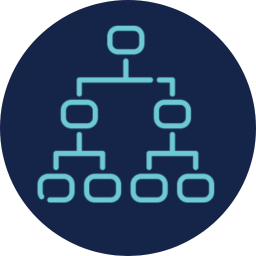Master pharmaceutical terminology and definitions with the Qsauri dictionary and thesaurus.
Regulatory affairs professionals play a pivotal role in pharmaceutical development. Understanding and aligning the specialized language used in regulatory procedures, guidelines, and communications is essential.
Developed specifically for the pharmaceutical industry, Qsauri provides comprehensive pharmaceutical terminology and definitions, covering over 3,300 terms and 4,000 relationships. These concepts are sourced from global and regional guidelines, including International Conference on Harmonization (ICH), European Medicines Agency (EMA), U.S. Food and Drug Administration (FDA), and Eudralex. Relationships are constructed either from reference sources or Celegence’s own interpretations.
The Qsauri thesaurus is dynamic and covers a wide range of subjects, including Regulatory Information Management, (Chemistry Manufacturing and Controls (CMC), Pharmacovigilance, Clinical and Nonclinical Research, Good Practices (GxP), Document and Data Management, and Electronic Submissions.
Why Keep a Thesaurus?
A thesaurus is a vital tool for controlling terminology, translating natural language into a more constrained ‘system language’ and serves as a controlled, dynamic vocabulary of related terms within a specific knowledge domain.
Advantages
Understanding Relationships
A concept record in Qsauri includes information like the reference source and definition. Qsauri covers hierarchical, equivalence, and associative relationships between concepts. The relationship type ‘Preferred term’ does not indicate that one term is better than another. The main purpose of establishing preferred terms is to achieve consistency in the terms used within your organization.
Hierarchical relationship

Two (reciprocal) types of hierarchical relationships are defined. A term can have a relationship with a ‘Broader term’ or a ‘Narrower term’, which represent a more general concept or more specific term, respectively.
Equivalence relationships

There are two pairs of equivalence relationships that can be specified in Qsauri. Firstly, ‘Abbreviation’ and ‘Abbreviation for’ link a full term with its abbreviation, and vice versa. Secondly, the ‘Used for’ and ‘Use’ relationship type, which is used to define a Preferred term and its associated non-preferred terms. These terms can be considered as synonyms/alias.
Associative relationships

A term can have one or more relationships, but not hierarchically, to associated terms, expressed as ‘(RT) Related term’. Qsauri intends to capture only the most direct and significant related terms.
What You Should Know
Most terms are presented in a natural speech format, such as ‘clinical research’ instead of ‘research, clinical.’ Celegence welcomes feedback and suggestions for new terms, reference sources, or improvements. Contact us at info@celegence.com.
Viewing and printing the content of this website is permitted for informational purposes only. The content may not be downloaded for use in information systems without Celegence’s permission.
Disclaimer: Qsauri is provided with careful control to ensure information is current, accurate, and reliable. However, Celegence cannot guarantee the information is always complete or up to date. Qsauri is not a complete dictionary, and relationships may include interpretations by Celegence. No rights can be derived from the information in Qsauri, and Celegence is not liable for any deficiencies or inaccuracies.